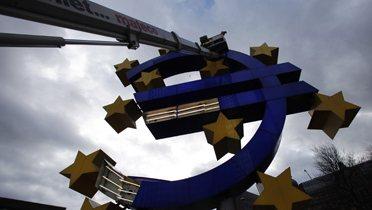Europe’s fifth attempt at a comprehensive solution to the euro crisis should be announced on Friday after a summit of Europe’s key leaders. Like the previous four tries, it is unlikely to provide the final answer, but it should move the continent considerably further in the right direction. The big risk is that political constraints will so undermine the attempt that market expectations, which appear unreasonably high, will once again meet disappointment. Such disenchantment may not hit immediately, but may evolve over succeeding days and weeks as two factors sink into market participants: (a) the degree of difficulty of implementing the agreements and (b) the extent to which the key players have differing views of the situation, often rooted in long-standing political cultures that are resistant to change. It will be surprising, and highly encouraging, if the leaders fail to disappoint to some significant extent as a result of these obstacles.
The good news is that there is an increasing consensus on the outlines of the ultimate answer. This growing agreement should allow the summit to make considerable progress in establishing the framework for that solution to be achieved. It may, however, take another round or two of crisis to overcome the political and institutional obstacles to the complete solution.
What is the solution? The eurozone needs to back the debt of its weaker members with unwavering support from its stronger members, most likely through actions by the European Central Bank (ECB). The quid pro quo for the stronger nations protecting the weaker will be greater control by European institutions over fiscal policies in each eurozone member, with the level of control much higher for members which need help or are pursuing dangerous policies.
Two other important issues will not receive much attention at the summit. First, banks in the eurozone need to be shored up with liquidity guarantees and sounder regulation. These steps are already in the works and will not be a primary focus of the summit. In any event, the situation of the banks would be greatly improved simply by reassuring markets about eurozone sovereign debt risk. Second, there are crucial long-term economic issues to be dealt with to ensure that the peripheral eurozone countries can restore their global competitiveness despite the constraints of being inside a currency union. Many economists and market participants do not see a successful long-term solution to the debt crisis without finding a way to restore competitiveness. This is difficult within the eurozone because the creation of a common currency eliminated the tools of independent national foreign exchange rate and interest rate policies, but the eurozone has not yet created other effective tools. In the US, for example, problems in California are automatically offset by reductions in its payments of federal taxes, increases in federal contributions to various safety nets, and movement of unemployed people out of California to other states. However, the summit’s focus will not be on issues as long-term and difficult as this, particularly since no one seems to have advanced a strong plan to solve this problem within the monetary union.
Why is it necessary for strong countries like Germany to indirectly back the debt of troubled, and sometimes irresponsible, countries? The problem is that the European bond markets have been badly damaged by underlying flaws in the governance structures of the eurozone, strongly highlighted and exacerbated by the financial and economic damage of the financial crisis and Great Recession, and compounded greatly by failures of European leadership in response to the earlier phases of the Euro Crisis. A history of four failed comprehensive “solutions” has strained the credibility of European leaders, forcing more dramatic action. (As I and many others have noted, braver moves earlier would have calmed markets and avoided the need for such extreme actions now.) The balance of opinion in the markets, which is what sets marginal interest rates, has grown skeptical of the ability of weak eurozone countries to cope without full-throated support from the stronger members. This level of concern means that interest rates are quite high for the weaker countries, at levels which would be unsustainable in the long run, since high interest costs on their large piles of debt would weaken the budget position of these countries still further. On the positive side, the markets remain clear that the economic strength of the eurozone as a whole can support the debt burden of the union, which is roughly on a par with that of the US.
If the stronger nations do not step forward in some manner to support the creditworthiness of the weaker members, then it is quite likely that there will come a point when Italy or Spain find themselves unable to borrow at reasonable rates for an extended period. This will either force the hand of the stronger countries at that point or produce very strong pressures for default by the troubled countries. (And “countries” will be plural, since contagion spreads easily in these market conditions, for a variety of quite sound reasons.)
The least politically costly way of providing this eurozone backing is for national leaders to do it indirectly, via the ECB. A more politically difficult alternative would be to beef up the European Financial Stability Fund (EFSF), or similar body, with much greater funding by national governments, augmented by some financial leverage and outside funding. Much less likely in the near-term would be the issuance of “Eurobonds,” which are bonds backed by full guarantees from each of the eurozone members. The obvious problem with the non-ECB alternatives is that they require national leaders to directly commit funds from their taxpayers, which is an unpopular choice. Nonetheless, there is a great deal of speculation that the European Stability Mechanism (ESM), which is supposed to replace the EFSF in 2013, will be brought forward to the summer of 2012 and, critically, be a complement to the EFSF, rather than a replacement. This would effectively provide between 250 and 500 billion euros of additional support, depending on how one calculates the baseline without this change [1]. Such a move would be helpful in combating the crisis, but would still leave the markets needing to know that ECB funds were available in much larger measure than now.
How would the ECB provide support for national borrowing? The ECB can create euros in unlimited amounts simply by making an accounting entry and can then use those euros to buy government bonds on the secondary market. (There is a treaty prohibition against buying bonds directly from eurozone governments.) Thus, it has the theoretical ability to ensure funding for all of the eurozone governments. However, there are at least two technical constraints and two political ones on the extent to which the ECB can do this.
First, “printing” euros could lead to an unacceptable level of inflation. Indeed, Germany’s inter-war experience of hyper-inflation as a result of extreme actions of this nature by its central bank is a powerful political damper on moves to print euros now. Thus far, the ECB has generally “sterilized” government bond purchases by taking other offsetting actions to reduce the supply of euros in the economy. Given the current economic conditions, which are not conducive to inflation, some respected analysts believe that the ECB could create several trillion euros before creating a serious risk of inflation. Others are less comfortable with going that far.
Second, related to Germany’s unfortunate history, the treaties underlying the eurozone prohibit the ECB from taking actions intended to finance government deficits. Nonetheless, the ECB can take actions for other reasons that have the effect of aiding such financing. For example, its purchases of Italian, Spanish, Portuguese, and other bonds through the Securities Market Program have been presented as necessary to ensure that “monetary transmission channels” continue to function, allowing the ECB to conduct monetary policy as it needs. (If financial markets do not work, it is very hard for any central bank to conduct monetary policy effectively.) Buying bonds could also be a form of “quantitative easing” such as has been used in the US, the UK, and certain other countries. It does not appear that the treaty provisions would stop the ECB if the central bank believed massively larger purchases were necessary and if there were sufficient political consensus among the member governments of the eurozone. In addition to the wide latitude legitimately provided by the quantitative easing and monetary transmission channel arguments, Europe has shown that it suffers from no lack of clever lawyers when they are needed to find a way to do what must be done.
The first political constraint is that it would be awkward for the ECB to move forward with this project if Germany is loudly opposed, even though technically it is a question to be decided by a simple majority of the ECB’s board, where Germany is heavily outnumbered. However, Germany carries very considerable weight as the economically strongest nation in the eurozone. Even if the ECB were to push forward despite such opposition, the financial markets themselves would take much less comfort in the face of that dissent, given that it might force an eventual curtailment of the program.
The more important political constraint, (with a small “p”), is that the ECB has a strong institutional interest in avoiding being stuck by the national governments with the bill for the sovereign debt problems in the eurozone. ECB leaders have a reasonable fear that if they begin buying sovereign bonds on a massive scale, Italy and the other beneficiaries will backslide on their commitments to budgetary and economic reforms. Germany, and the other fiscally strong governments, share a similar fear. If they step up and back the government debt of the weaker countries, then they could end up providing ever-increasing aggregate levels of support as the weak nations choose to put off painful choices. (A U.S. observer, of course, is hardly in the position to assert a moral superiority on the political will to exert fiscal discipline.) This tension explains, to a considerable extent, the brinksmanship that leads the ECB and the national governments to hold off on putting up the money until they see how the other moves.
These fears of “reform fatigue” and backsliding are why it is essential at this point to take major steps towards greater fiscal controls at the European level. Germany and the ECB must be made comfortable that there are mechanisms to ensure that recipients of eurozone support will follow through on the implementation of the necessary reforms to restore normal market access. They need to see ECB bond purchases, or the use of the EFSF, as a bridge to a longer-term market solution and not eventual defaults or perpetual support.
There are a number of mechanisms under discussion, including having a eurozone finance minister with the legal ability to veto national budgets that violate agreed-upon rules. Financial penalties might be levied when nations first stray from fiscal discipline, at a point where they can still afford to pay such a fee. (It is impractical to impose a fee when the situation it too far gone for the country to come up with the extra money.) Earlier, there was even talk of taking away a country’s vote on European matters if they are too far in violation of the fiscal rules, although I have not heard that idea recently. Eurozone countries that receive substantial levels of extra support will clearly find themselves taking technical assistance and accepting surveillance from European institutions. At the end of the day, of course, none of these approaches is fool-proof. Unless one is willing to send tanks across the borders or drop paratroopers on the capital, a sovereign nation can always refuse to meet its treaty obligations. However, there is clearly a great deal that could be done to change the political incentives so that it would be a very improbable case where a eurozone government would choose to completely flout its obligations, as opposed to cheating around the edges.
One of the reasons that the summit is likely to disappoint markets at some level, perhaps with a delay, is an issue of timing. European governments think in terms of months and years in dealing with such major changes. The markets, unfortunately, are very nervous now. Fiscal integration in Europe will take too long, and consequently leave too many uncertainties in the interim, to completely reassure markets on its own. Instead, there will almost certainly be a need in the relatively near future for the ECB, or coordinated efforts by the strong governments through the EFSF or other mechanism, to demonstrate that debt of the troubled countries will be supported very strongly. There are simply too many things that could go wrong across the eurozone for the markets not to be scared again if they are unsure who will ultimately provide the needed support.
Thus, it seems probable that on Friday the Euro Summit will announce some very important steps to deal with the underlying problems of the eurozone, but that they will be insufficiently precise and with too much implementation risk for the ECB to make the kind of statements, or take the kind of actions, that the markets need. I would expect the ECB to make supportive statements after the summit, and to step up their bond purchases if that seems warranted at the time, but not to go out on a limb and make a clear, massive, and long-term commitment to bond purchases.
The importance of the steps and the supportiveness of the ECB’s body language may provide considerable help in the immediate aftermath of the summit. Even if it does, though, there will be many tests in the subsequent days and there is a high likelihood that the ECB and the key national governments will fail at some point to provide the reassurance that the markets need. There is, therefore, a real possibility that another summit will need to follow in the fairly near future to take the steps necessary to allow the central bank and the leading eurozone leaders to fully commit themselves to saving the eurozone, in practice and not just in words.
Footnote
[1] Counting only the continued availability of uncommitted EFSF funding produces a figure of roughly 250 billion euros. Viewing the acceleration the ESM timing as the critical point yields the 500 billion figure. Even the 250 billion euro figure may prove to be high, as a ratings downgrade of Germany or France would significantly reduce the available EFSF funds, for complicated technical reasons, unless counteracting measures were taken.




